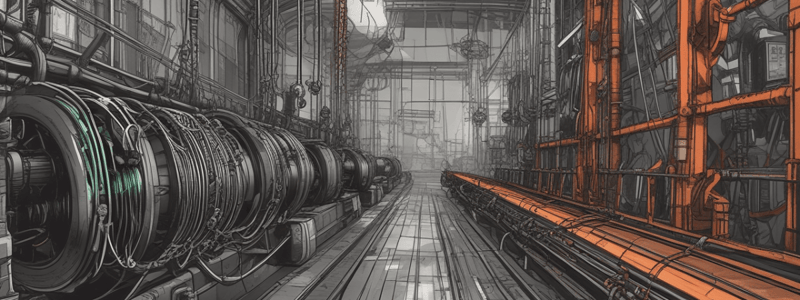Podcast
Questions and Answers
What was the main cause of the accident involving the batteries?
What was the main cause of the accident involving the batteries?
- The FIBCs were not designed to hold the weight of the batteries
- The site was overstocked and batteries were stacked in an unsafe manner (correct)
- The workers were not trained to handle the FIBCs
- The worker was not wearing proper protective gear
What was the consequence of the accident?
What was the consequence of the accident?
- The worker suffered a minor injury to his back
- The worker was not injured at all
- The worker suffered a minor injury to his hand
- The worker suffered a double compound fracture to his lower right leg (correct)
What is a contributing factor to the accident?
What is a contributing factor to the accident?
- The FIBCs were not properly secured
- The worker was not physically fit to handle the batteries
- The worker was distracted by his colleagues
- The lack of specific documented risk assessments and safe systems of work (correct)
What was the weight of the batteries that fell on the worker?
What was the weight of the batteries that fell on the worker?
What type of containers were the batteries stored in?
What type of containers were the batteries stored in?
Flashcards are hidden until you start studying
Study Notes
Incident: Broken Wire Rope Strand
- A single outer wire rope strand broke, lifting a chandelier with a proximity switch into the bell main wire rope sheave, which could have prevented a safe bell lock on.
- The root cause of the incident was a design failure, as the chandelier was a tight fit, allowing movement when a broken strand passed through.
- A direct cause of the incident was equipment damage, as a single broken outer strand was enough to lift the chandelier into the bell main wire rope sheave.
Actions Taken
- The proximity sensors and chandelier were relocated to a solid suitable point on the static side of the clump weight wire rope, eliminating the risk of reoccurrence.
- A damaged length of the bell wire rope was cut back, and a load test was performed, witnessed by the Classification Society.
- A dive trial was conducted with an empty bell to working depth to double-check suitability and length of the bell main wire rope.
- Individual wire testing revealed reduced ductility, causing a lack of elongation in the complete wire rope and resulting in a reduced load-bearing capacity.
- The lack of ductility was explained by the phenomenon of strain aging, influenced by steel chemistry, manufacturing methods, time, and temperature relationships.
Incident: Lone Worker Collapsed at Onshore Site
- A person collapsed at a workshop facility due to a non-work-related, pre-existing medical condition and was unable to call for help.
- The person was working alone and was not discovered until the following day, despite having a phone.
- Following the collapse, the person was able to move into a disused office area but was not found until a colleague entered the workshop and heard a call for help.
Lessons Learned
- The importance of suitable arrangements to monitor and track lone workers, including security patrols/checks.
- Ensuring robust pre-employment medical screening and health surveillance measures to identify personnel who may be classed as vulnerable.
- Consideration of the use of fall alarms for lone workers, which can automatically alert on-call service in the event of an individual falling or collapsing.
Actions to be Taken for Lone Working
- Fully understand what "lone working" is and subject it to a task risk assessment that addresses foreseeable emergencies, access and egress arrangements, risk of violence, vulnerable persons, local legislative requirements, and the level of supervision required.
Incident: Watertight Doors
- Watertight doors that ought to have been secured shut were observed open during a safety walkaround, highlighting the importance of maintaining watertight doors.
Incident: Worker Injured by Falling Stack of Batteries
- A worker was severely injured after batteries weighing at least 300kg fell onto him, causing a double compound fracture, fractured bones, and other injuries.
- The incident occurred due to overstocking, unsafe stacking, and lack of documented risk assessments or safe systems of work for the correct stacking and storage of batteries.
Studying That Suits You
Use AI to generate personalized quizzes and flashcards to suit your learning preferences.




